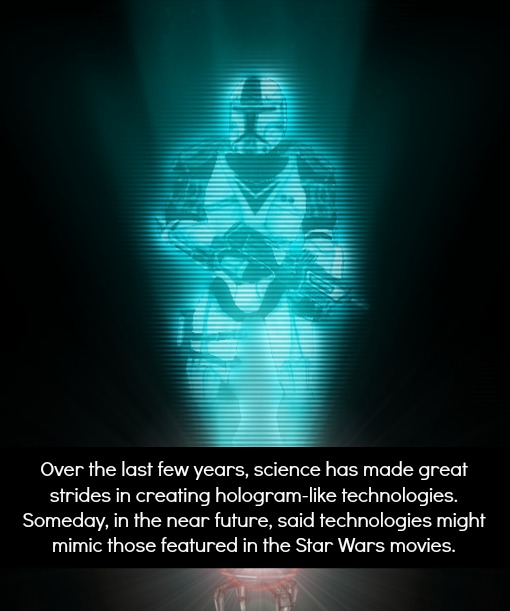

Announcements about technological strides like this make me very happy to be alive at this moment in time. According to scientists, who hail from the Massachusetts Institute of Technology, holograms similar in many ways to the those featured in the Star Wars movies (with Princess Leia) have been developed that can be produced inexpensively. Hopefully soon, gone will be the days of conventional 3D movies (the kind that give us awful headaches, or make us want to puke).
In order to develop a system that allows people to see an image from a 3D perspective, we must manipulate light-rays, causing them to reflect from an object at various angles. This gives us the opportunity to see a different image from each angle, which is basically the difference between 2D and 3D videos. To do this, many different tactics are undertaken. Some of the systems involve a series of rapidly spinning mirrors. Whereas, other systems employ the use of lasers and multiple graphics processors. Regardless of the system, the effects are mostly the same.
While effective for the movies, current existing forms of this technology have debilitating limitations. Most notably, the quality of the holograms themselves. The size of the 3D images, the viewing angle and the speed the frames are capable of changing were also among the many restrictions. However, all of that may be irrelevant, as its possible to fix a few of these problems by modifying the spatial light modulators — the technology responsible for directing the light into the proper points in three dimensional space, making the images come to life.
The team from HP Labs have developed a new screen, created through modification of the conventional liquid-crystal display (LCD) systems, which are used in most of our modern technologies (such as television screens, laptops and cellphones). These have sheets of material (like glass or plastic) that are covered in bumps, scattering light that is directed to the appropriate channel that controls the colors of the display, the polarizers and the shutters.

Taking the existing models, the team added nano-patterned grooves, which similarly allow the light to scatter off into the appropriate directions. The “directional pixels” as they are called, have three sets of grooves. Each direct the green, red and blue light into the nessecary direction. (These grooves determine the number of viewpoints each hologram can possibly have). After which, the light pass through a series of liquid crystal shutters. Some block the light or pass it on, directing the different light rays from an object to a person’s left or right side, tricking the eye into seeing a moving hologram — Essentially doing away with the moving parts and mirrors used before.
Better yet, this technology is apparently capable of producing a static image seen from 200 different viewpoints. With videos, there would be 64 viewpoints that change at the rate of 30 frames per second. You could quite literally walk in a circle around the hologram and no identical image would be repeated. Of course, then we have another problem. 200 separate images are needed, which means the technology is not quite ready for its grand debut, but it does have some grand implications for holographic technology. Furthermore, Dr Michael Bove, the team leader, estimates that one of these monitors can be built for less than $500.